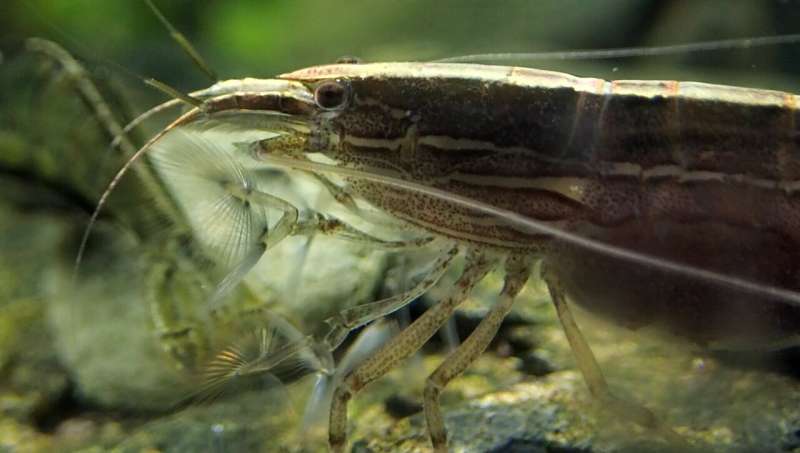New Australian shrimp species scales waterfalls, changes gender and eats using 'nets'

Researchers have described an unusual species of shrimp found in north Queensland, which scales 100-meter high waterfalls, changes gender, and uses nets on its front legs to eat.
A distinctive feature of the shrimp, Australatya hawkei, are the small "nets" on its front legs used to catch plankton to eat. Because dirty water blocks up the nets, the shrimp are only found in places with clean water.
Researchers from Southern Cross University, REST Energy, and Griffith University discovered the species. Dr. Ben Mos, a marine biologist based at Southern Cross University's National Marine Science Centre in Coffs Harbour NSW investigated the shrimp's complex lifecycle as part of the project.
"By understanding the lifecycles of freshwater animals like shrimp, we are learning more about the ways in which land and freshwater ecosystems are connected with the oceans," Dr. Mos said.
The shrimp start life as males and switch sex when they are about half-grown. Females carry their eggs under their abdomen until the eggs hatch as tiny larvae that are likely carried all the way to the sea. Eventually juveniles return to freshwater streams high in the mountains.
Large waterfalls are just one of many obstacles that must be overcome as the shrimp return.
"This species of shrimp climb out of the water to scale 100 meter high cliffs beside waterfalls. It's an amazing feat for an animal that normally lives in water," Dr. Mos said.
The researchers found this shrimp is closely related to another "filter-feeding" shrimp first described almost 100 years ago. The new species was probably overlooked until now because the two species look very similar.
However, modern genetic and statistical techniques clearly demonstrate that Australatya hawkei is a new species that lives in northern Queensland; its close relative, Australatya striolata, lives mostly in New South Wales and Victoria.
Dr. Satish Choy, leader of the research team that described the new shrimp, points out: "Globally, many species of shrimp are threatened and some have gone extinct. We need to know how many species are out there and where they are found if we are to come up with the right solutions to adequately protect them. Modern taxonomic approaches are helping us to find new species that have gone unnoticed because they look similar to species already known to science."
The peer-reviewed scientific paper describing Australatya hawkei is published today in the international journal Zootaxa.
More information: Antonio Carlos Lofego et al. Reinstatement of Metatarsonemus Attiah (Acari: Tarsonemidae), with description of a new species, redefinition of the genus and a key to the world species, Zootaxa (2019). DOI: 10.11646/zootaxa.4711.2.5
Journal information: Zootaxa
Provided by Southern Cross University

















